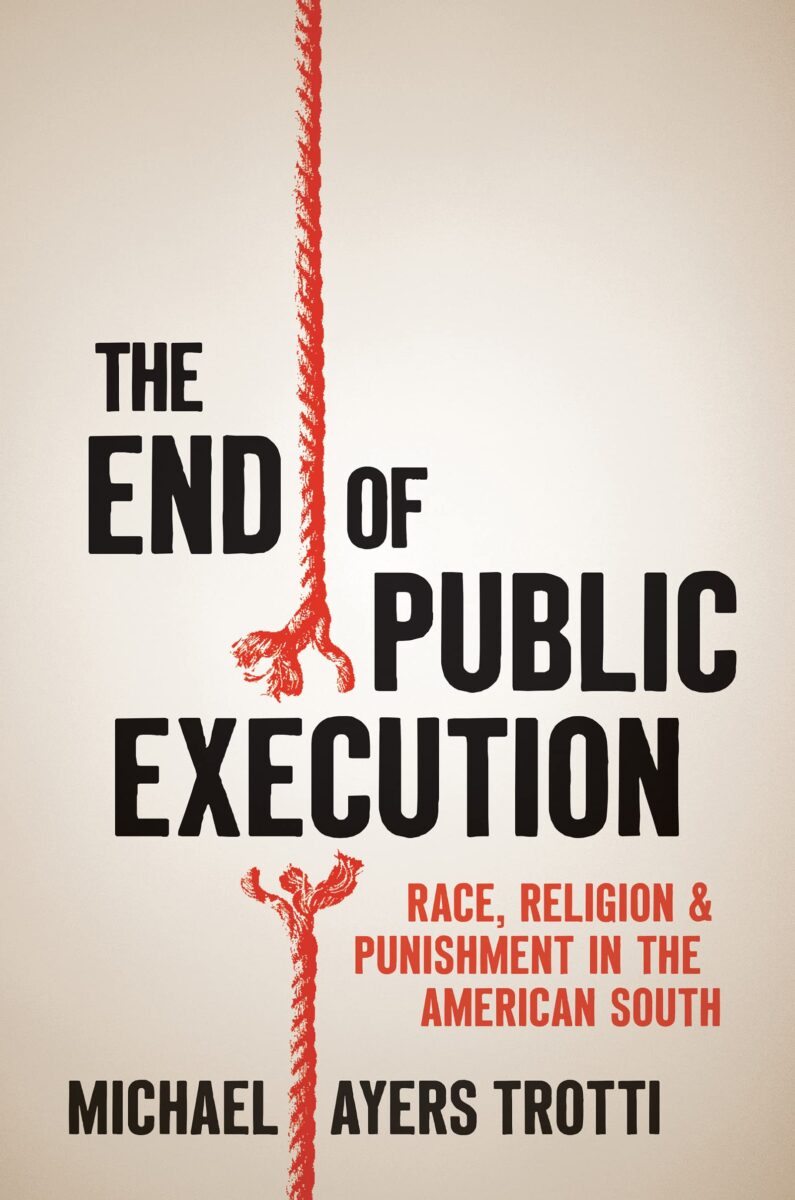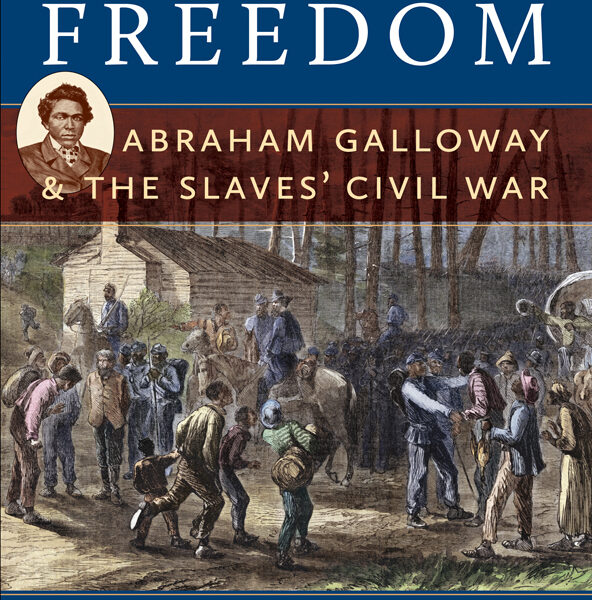One of the most enduring symbols of state violence in the New South is the electric chair, a gruesome tool of capital punishment contained deep within the brick walls and cavernous hallways of the state penitentiary. The lasting power of that symbol is easy to detect if you teach at Sam Houston State University, in Huntsville, Texas. The looming walls of the nineteenth century state prison stand mere blocks from our campus, where the execution chamber still resides. It no longer uses an electric chair, but that implement of death is now “proudly” and macabrely displayed in a local prison museum.
In his latest volume on Southern violence, Michael Ayers Trotti, a professor at Ithaca College, weaves a wholly unexpected story for how the New South ended up at the electric chair. His narrative, backed by extensive evidence and data drawn from 1,300 executions carried out in the former Confederate states between the end of the Civil War and 1936, is less a story of the consolidation of state power through technological and political means than a history driven by the agency of Southern African Americans resisting a paranoid and reactive state. Execution as a public spectacle came to an end in 1936, the author contends, because African Americans had successfully denatured its intent as a display of authority and bulwark of white supremacy.
Public hangings at the gallows, frequently attended by throngs numbering in the thousands before and immediately after the Civil War, were one of the few spaces of the emerging New South that remained integrated—and with purpose. Intended to put on full display the power that white monopolized states held over their Black residents, public executions were meant to humiliate Black convicts and cow Black audiences. But results, the author finds, did not reliably meet expectations. Black convicts used the “ceremonious” nature of public executions to defend their innocence. Even more than that, Southern Black churches and congregations wove their beliefs and rituals into the format of public executions. Convicts loudly proclaimed the salvation that awaited them upon death. Black congregants in the audiences prayed—even sang—loudly over the shouts of white spectators, honoring the repose of the soon-to-be-executed and celebrating the passage of his soul from a world of injustice to a heavenly paradise. Black Southerners turned public executions from a naked display of white power to an open moralistic challenge of white supremacy, in one of the few public spaces where white and Black freely intermingled in the New South.
As a result, Trotti concludes, the series of decisions made by white-dominated Southern legislatures to take executions and hide them away deep within the brick walls of a penitentiary were a reactive measure meant to take a platform away from Southern African Americans and Black churches. The electric chair emerged not in a world where white supremacy stood unchallenged, but in a society where Jim Crow and its political and social implications loomed under constant threat and had to be vigilantly maintained.
Trotti’s convincingly demonstrated thesis supports and nuances recent literature on other forms of Southern violence and punishment and even broader parts of the cannon of Southern politics and society. The fifth chapter, titled “Uncivil Executions,” draws surprising relationships between public executions, vigilantism, and lynchings. Convict leasing, a topic that is now a hot stove of new historical research, weaves itself in and out of the background of Trotti’s study as part of the broader context of punishment regimes in the South intended to denigrate Black convicts. Moreover, Trotti’s arguments about the contingent frailty of white control in the New South meshes with a long tradition of literature. The eminent political scientist, V.O. Key Jr., surveying the politics of the allegedly “Solid South” about a decade after the last public execution had been carried out, found it rife with factional dispute, twisting and distorting under the pressures of institutional change invited by the New Deal and the ferment of social change boiling within its borders. Of course, the great Southern historian C. Vann Woodward found the New South to be an unstable society riven with contradiction, though white Southerners claimed the opposite was true.
With The End of Public Execution, Michael Ayers Trotti gives us yet another perspective on how the world and the “natural order” that white Southerners envisioned and held as truth had to be most unnaturally forced into place. And even then, the reality in which white Southerners lived rarely conformed to what they thought it ought to be.
Aaron David Hyams is a lecturer in the Department of History at Sam Houston State University.





